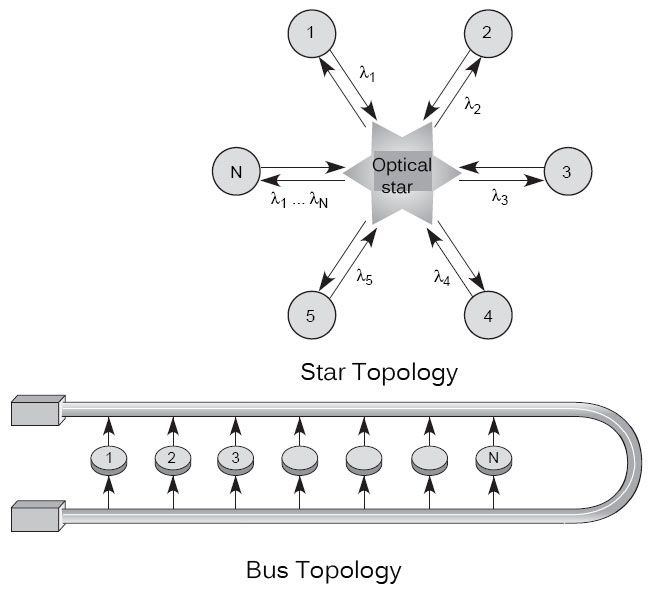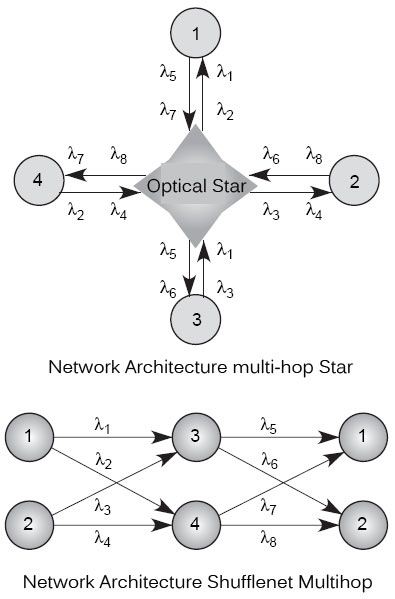Broadcast: Any form of communication in which a single sender transmits messages to many receivers at once, the most familiar examples being the television and public radio systems. The opposite of broadcast is POINT-TO-POINT or narrowcast communication, between just a single transmitter and a single receiver – a telephone conversation for example. When such a multiple connection is made via a network cable as opposed to wireless, such communication is often called MULTIPOINT, as opposed to a point-to-point or UNICAST. Communication channel is shared by all the machines on the network in broadcast network.
In broadcast networks, each receiving station receives all the signals sent by the transmitters. The routing of the signals is effected passively. Each station may transmit on a separate wavelength. The receiver receives the desired signal to be placed on the right wavelength. The two most conventional topologies are the star and bus, as shown in figure. In both cases, each station transmits towards the area, which makes a wavelength-division multiplexing of all waves reaching it.

When all the signals come directly to all stations without passing by electric forms, the network is said single-hop. This is the case of the two structures illustrated in Figure. If you have to go through intermediate steps to perform routing, we have multi-hop network (multi-hop), such as those described in Figure.

As an example of a broadcast network and single jump, we have already mentioned the Lambdanet Bellcore. The difficulty of this type of network is to have sufficient wavelength and receivers with components capable of adapting to rapid changes in wavelength optical signals. In view of this major difficulty, of diffusion and multihop networks have been developed by several companies. In these networks, the transmitter and the receiver usually have only two wavelengths. To go from an input to an output port, the information is routed in the form of a data packet. As switching is done at the intermediate node, there are passing through an electronic element, which is a fragile item to be secured.
Figure shows that to move from node 1 to node 2 must be issued, for example, the wavelength of 2 to node 4, which forwards on the wavelength of 8 to node 2, or issue on the wavelength 1 to the node 3, which transmits to the station 2 of the wavelength 6. It is seen that two paths are possible, which secures the communication process.
 Dinesh Thakur holds an B.C.A, MCDBA, MCSD certifications. Dinesh authors the hugely popular
Dinesh Thakur holds an B.C.A, MCDBA, MCSD certifications. Dinesh authors the hugely popular